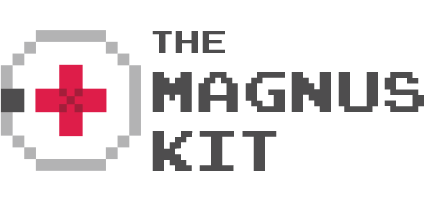Let’s Start Looking At: Overwatch
As a general rule, I’m not big on online multiplayer games. I’ve enjoyed a few, like Tribes 2, and Unreal Tournament 2004, but the majority involve either grinding or are slightly altered versions of Call of Duty or Battlefield. Every once in a while something comes along that’s a bit different, but few online multiplayer games have managed to hold my attention like Overwatch has.
This is a Let's Start Looking At rather than a full Let's Look At. I haven't made it to Competitive Play yet and I'd rather not give you wonderful readers and incomplete piece, so just hang on for the full thing.
Firstly, Overwatch has an actual story! None of it is presented in game, but there are a few comics, some very well made animations, and other background floating around the internet. On a fictionalized Earth, 30 years in the future, humanity invents artificially intelligent building robots called omnics to ensure global economic equality and build more omnics. Eventually the omnics rebel against humanity, creating combat models. The UN establishes Overwatch, a global collection of soldiers, scientists, and others to keep the peace across the globe. However, allegations and failed missions sour the public’s opinion and the UN disbands the group and makes any Overwatch activity illegal, but Overwatch reforms when a second omnic crisis threatens.
But, none of that matters. You fight on teams with your enemies and allies alike, and the missions are basically variations on “hold this point.”
Multiplayer shooters can have all the bells and whistles that they want, but everything will fall apart without sturdy basic mechanics. In Overwatch, all of the different characters have unique weapons that all feel punchy and solid. Each character has their own speed and movement abilities, and you have the option to fight against training robots to test out each of the characters. The interface is simple to understand, and warnings let you know if your team lacks a healer or if you’ve got low overall damage. You will enter an objective-less skirmish mode while you search for an online game.
There are currently 22 heroes divided into four classes (six Offence, six Defense, five Tank, and five Support). Each hero has their own weapon and abilities that fit them into their class. Genji (Offence), the cyber ninja, climbs up walls, deflects incoming projectiles, and deals an extreme amount of close quarters damage. Widowmaker (defense), the kind-of-dead French assassin, sets up a poison gas trap, slingshots around the map, and reveals all enemy locations for a short time.
The sheer amount of variation in each class means every match can be played in totally unique way. Of course, that all depends on the players. While it’s easy to pick up any of the characters and play based on their class alone, they all have untapped depths in the hands of a talented player. For instance, I’ve seen some Mei’s use their ice wall ability to launch enemies in the air to make them easier sniping targets.
Maps are distinct, but uniform from a design standpoint. Each map corresponds to a game mode (some can host multiple kinds of game) and contains one main thoroughfare and several side paths, so you can ambush enemies, pick them off with sniper spots, or flank your teammates. For instance, Route 66 is an escort mission where one team must escort a slowly moving payload to the end of the map the other team must halt the payload until time runs out. There are several choke points for the defense team to use, as well as side paths for the offence team to get around behind the defense team.
One of the most fun parts of Overwatch is one of the most problematic aspects of the game. After every match, one player is awarded Play of the Game, with a little intro screen (multiple unlockable varieties for each character) and a replay of said amazing play. On the surface it’s an awesome way for somebody to show off a little. 90% of the PotG you’ll see are going to be offence plays; Genjis unleashing their Dragonblade on 5 clustered enemies, Tracer using her exploding time bomb to take out all the enemy players defending the payload, etc. If you play a support character and you get a PotG, you know one of two things: either your team is terrible, or you’re really good. The game weights kills much higher than good support or tanking, so many players choose offence heroes, even when their team becomes crazy unbalanced. However, players can give kudos for the top performing players of offence, defense, support, tanking, and a few others and players will often give 5 out of 12 possible kudos to the best support character, but the game itself seems to focus on offence. The Overwatch devs have stated that they’re looking at this issue, so this issue might be resolved soon.
Worth Playing?
Yes.
If you like Arena Shooters, online multiplayer, colorful characters, or just like fun games, you should play Overwatch. It’s has a huge player base right now, new heroes are definitely coming, and it seems like it can only go up from here, barring a crazy patch change that makes Mei even more annoying.
By reading this you have been cursed by the PotG ghost! Share this article 500 times or you’ll never get Play of the Game again! Hurry!
Don’t forget to follow TheMagnusKit on Facebook and Twitter for more Overwatch complaining and general tomfoolery.










































